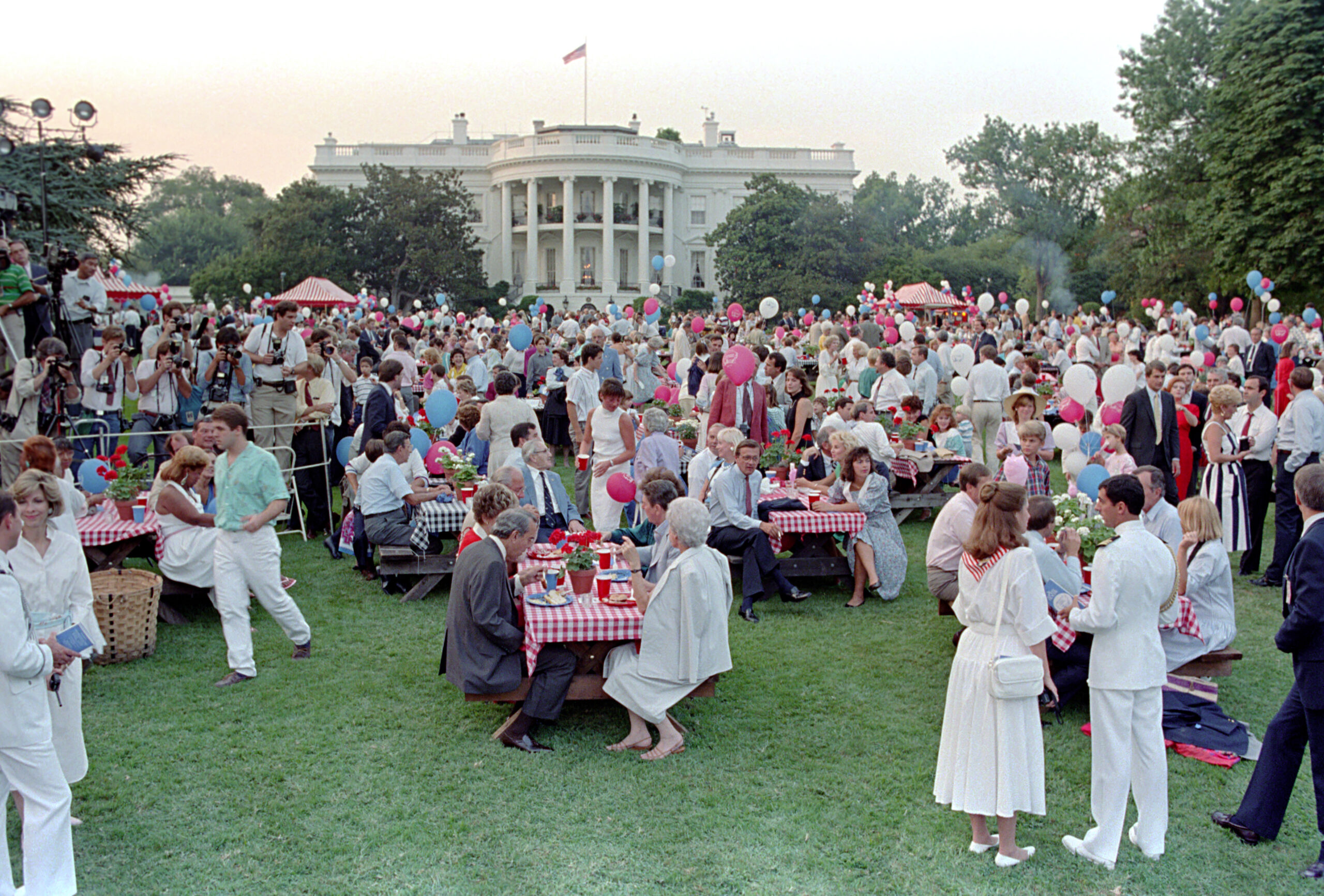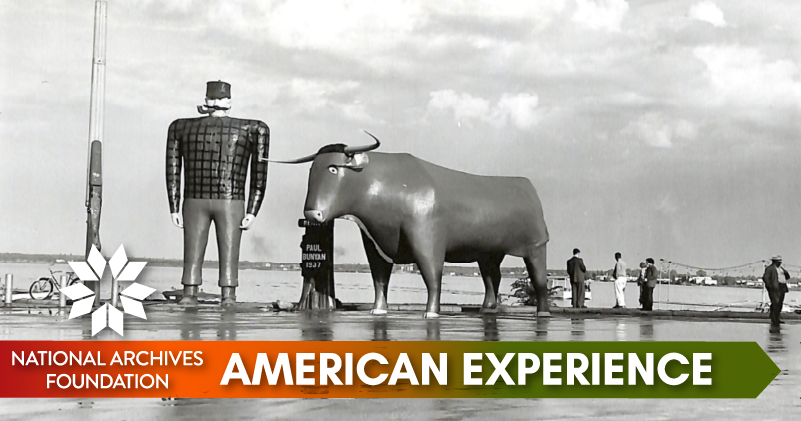Clowning Around

No Clowning Around
As a kid, I went to clown school. The circus came to town, and I had the opportunity to spend a day with professional clowns where I learned different ways to put on face paint (are you a happy clown or a sad clown?), how to communicate without talking (very exaggerated facial gestures required!), and how to become part of a human clown machine. (Sadly, I still do not know how they get so many clowns into that very tiny car. Some secrets were left untold.) As you can imagine, it was memorable.
A few months ago, this memory got me thinking – I wondered how many clowns are in the Archives? No joke, it’s kind of a funny story…
The first week of August was designated International Clown Week by President Richard Nixon in 1971 to honor the wholesome entertainment that clowns bring to families at the circus and those in hospitals, orphanages, and elderly homes. Not everyone nose that clowns have a long history with the U.S. government. From WPA projects and Congressional events to White House birthday parties and diplomatic meetings, clowns have often been the entertainers of choice – leaving big shoes for other acts to fill. As you’ll discover, there’s a wide variety of clown performers, and the Archives has them all: funny clowns in classic makeup and dark, dramatic clowns whose performances are more in tents.
Although putting this newsletter together was no small feet, we thought it would be a nice jester to mark International Clown Week by showing off a few of these entertaining records.

Patrick Madden
Executive Director
National Archives Foundation
White House Circus

Description of the party
National Archives Identifier: 6037497
On October 31, 1969, Tricia Nixon hosted a Halloween party for 250 children at the White House. The entertainment included a tarot card reader, a go-go girl puppet that was manipulated by the Smithsonian Puppeteers, magicians performing tricks, actor Jonathan Frid, who came dressed up as his character vampire Barnabas Collins on the daytime soap opera Dark Shadows, and several clowns, including one who twisted balloons into animal shapes for the children to take home.
A year and a half later, President Richard Nixon signed Public Law 91-443 on August 2, 1971, proclaiming that week National Clown Week. The measure had resulted from the urging of Frank Kelly, the International Clown Week Chairman of the Clown Club of America. Kelly had worked with Senator John McClellan of Arkansas, who was chairman of the Senate subcommittee on Observances and Holidays, to achieve the successful passage of the law.










Combating the Depression
The Works Progress Administration (WPA) was part of President Franklin D. Roosevelt’s New Deal program. Created in 1935, the WAP was intended to provide work for people left unemployed by the Great Depression. One of its programs was the Works Progress Administration Federal Theatre Project (FTP), which also began in 1935. Based in New York City, it aimed to keep entertainers, including writers, actors, dancers, costume designers, and, yes, clowns, working during the depression.
Under the direction of playwright Hallie Flanagan, the program employed about 10,000 entertainers and organized about a thousand theater productions in forty states over a four-year period. However, the project was abruptly ended when the House Un-American Activities Committee and the Subcommittee on Appropriations investigated it because of suspicions that some of its members had communistic leanings. Acting on these suspicions, Congress terminated the Federal Theatre Project in 1939.




















No Funny Business
The National Archives is the repository of many images from the Paris Bureau of the New York Times. Among the most intriguing are these photographs of clowns taken in the City of Light. These photos include some of Europe’s most famous clown performers, including Grock, the Cairolis Brothers, and the Fratellini clowns.
Another celebration that includes these clown masks is the Carnival in Mittenwald, Bavaria. Carnival season lasts from Epiphany on January 6 to Shrove Thursday, which is a rotating day every year. Mittenwald celebrations begin on Shrove Thursday, also known as Unsinninge Donnerstag or “Nonsense Thursday,” and involve celebrations of making noise to welcome in spring – a 500-year-old tradition. The figures in masks are called Maschkera, and each wears a mask that is locally carved to ward away the evil winter spirits.











An International Happy Meal
One of the most famous clowns in the world, Ronald McDonald, spent most of his time selling hamburgers under the Golden Arches, but he also liked to support the military. Ronald could often be spotted talking to the children of U.S. troops down on the docks when the Navy was launching a new ship—his bright red hair, striped shirt, and yellow overalls made him stand out in any crowd!
In 1989, three Soviet warships came to Norfolk, Virginia, for a good-will visit to the United States. Eleven hundred Soviet soldiers spent five days mingling with American soldiers and their families at the base, but they also went on other adventures like eating at a pizza parlor, visiting shopping malls and grocery stores, going to Busch Gardens, and, of course, eating at McDonald’s. For entertainment on the base, they were greeted by none other than Ronald McDonald himself. In exchange, families were invited onto the Soviet ships while the soldiers entertained them with musical performances and dancing.
Luckily for the Soviet soldiers heading back to their home country, the first McDonald’s opened there just a year later in 1990.








Send in the Clowns

Nancy Reagan Clowning Around During The Congressional Barbecue and Photo Ops with Clowns in The Diplomatic Reception Room
National Archives Identifier: 75854983

President Ronald Reagan and Nancy Reagan at The Congressional Barbecue on The South Lawn
National Archives Identifier: 75854981
On August 14, 1986, President Ronald Reagan and First Lady Nancy Reagan hosted a barbeque for members of Congress and their families at the White House. In addition to food and music, plenty of clowns were on hand to keep the attendees amused. Nancy Reagan even got into the act in the Diplomatic Reception Room.
(32 minutes 17 seconds)
National Archives Identifier: 77443092






